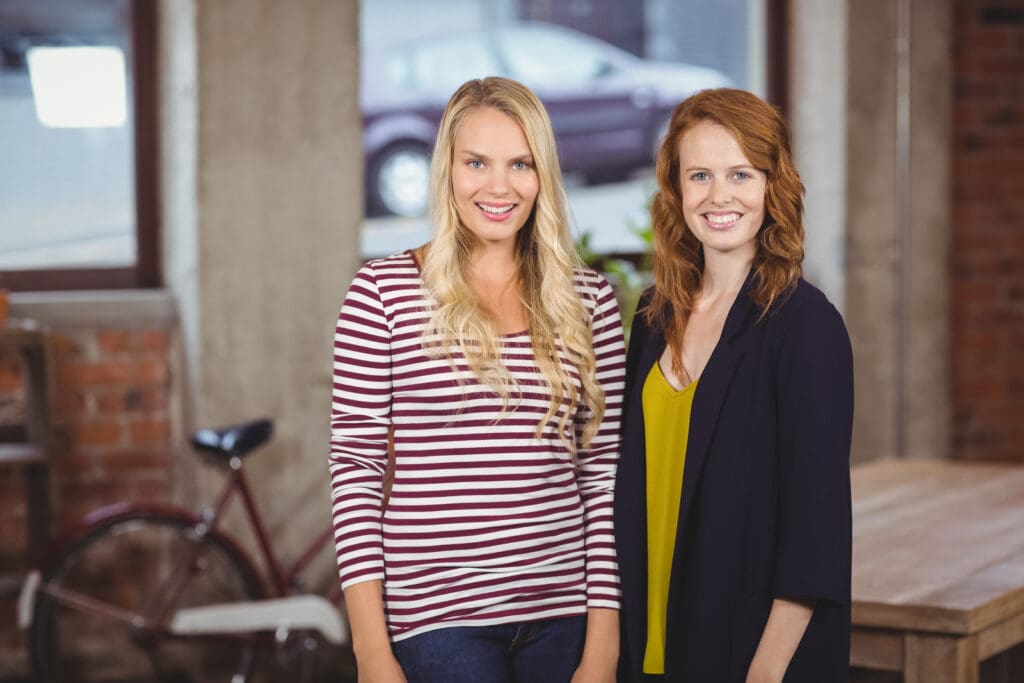As a society, we have come a long way from the time when women didn’t have voting rights, couldn’t have jobs and were defined by boundaries of family and relationships- well, sort of. We can’t say we have got everything figured out.

Even though women are offered positions and opportunities along with men, they don’t always feel comfortable in these spaces. For example, many women share how offices don’t have private breastfeeding rooms, or open offices make them uncomfortable because they always feel watched by others.
It seems like we decided to give equal rights in theory, but we didn’t really know how deep the inequality actually is. These subtle things in the workspace send the message that women cannot fit into these spaces, or won’t thrive there as well as men.
Thanks to feminist groups, there are many conversations going on about how to create more inclusive spaces for all genders, ranging from public washrooms to open outdoor spaces. Coworking spaces have taken a step in this direction by creating spaces that are exclusively meant for female professionals.
What are women-only coworking spaces?
As the name suggests, the membership of these coworking spaces is only given to women. But that’s not it. Hera Hub was the first company to start an exclusive women’s coworking space in San Diego in 2011. These spaces are designed, both in terms of material facilities and social environment, to encourage and inspire women from different professional backgrounds.
Why we need coworking spaces for women
Many kinds of modern professions are male dominated. When women enter these fields, they experience something called the glass ceiling effect, wherein they find that after being promoted to a certain level, it seems impossible to get promoted further, especially in leadership positions.

Despite their competence, they are not able to succeed in leadership positions. They find that their subordinates, especially male ones, are hesistant to cooperate with a female leader. This phenomenon is observed across the world, even in ‘developed’ countries.
66% of women in UK report that they have experienced this glass ceiling themselves. In Canada’s largest companies, only 20% of board members are women.
On the other hand, certain professions are female dominated, like teaching, nursing, cosmetics, fashion, etc. However, when men enter these fields, they experience something called a glass escalator.
Unlike women, their gender identity actually helps them advance in the field faster than others. Clearly, inequalities in the workplace are not a matter of profession or person, they come from deeprooted injustice and inequality in the society.
Women’s coworking spaces are a way of bringing women together so that they can affirm each other’s experiences and look out for each other in professional settings.
What do women’s coworking spaces look like?
Women face unique challenges in the workplace. While most men can focus on their career and work, women are alone expected to worry about children and family. The journey is tougher for single mothers.
Moreover, women often have to worry about their safety, both outdoors and in the office. They are more conscious about people making them uncomfortable or crossing boundaries. To add to this, they often have to put up with sexist jokes and stereotypes coming from their coworkers, and even their superiors.
Women’s coworking spaces try to help lessen the burden of these challenges by providing the following amenities.
Ergonomic workstations
The furniture and devices in many offices are designed to suit the bodies of men. When these products were first manufactured, they were probably tested with men, since women were not present in large numbers. To this date, many products still follow these outdated designs.

Coworking spaces for women should have more comfortable and adjustable furniture. It should be helpful for different body types. Chairs, tables, desks, and PC set ups can be made more flexible so that members can change the settings as per their preferences.
Lactation rooms

What many offices consider a fancy add-on is in fact a basic necessity that all mothers need. A private breastfeeding or pumping room with comfortable seating, sink for cleaning breast pumps, and refrigerator for storing milk can be included in this facility.
Daycare and babysitting services
Although this is a helpful feature in women’s workspaces, it should be available in all workspaces, to avoid perpetuating the steroeotype that child care is women’s responsibility. Coworking spaces can partner with neighboring daycare centers to support working mothers.
Free menstruation-related supplies
Pads and tampons can be made freely available in bathrooms. These are essential services, just like water. They should be easily accessible to women to ease their work day during that time of the month.
Healthy snacks and beverages
A 2022 study found that 24.66 million women of reproductive age had nutritional deficiencies. Women have unique health problems arising from reproductive issues, autoimmune diseases, hormonal imbalances, bone health, etc.

Women sometimes find it difficult to take care of their own diet and nutrition because of the multiple responsibilities that they have to juggle. People who are experiencing anxiety and depression tend to undereat or overeat as a way of unhealthy coping.
Moreover, in today’s fast paced lifestyle, it is almost too easy to access cheap, attractive snacks is all too easy. Unfortunately, the task of feeding families falls on women alone. Healthy snack bars are a great way of helping the members build their health and immunity.
Mentorship programs
Women’s coworking spaces host lectures, workshops and seminars by women who are successful entrepreneurs and professionals. It is a source of networking, support, and also motivation and inspiration for women who are sailing through the same boat.
Pitfalls of coworking spaces for women
Women’s coworking spaces sounds like an awesome idea. In fact, it’s not a new idea. There are certain restaurants and bars that are reserved for women or LGBTQ community members, either all day, or during specific hours or days.
But here’s the catch about these places- they rely on segregation as a solution to the discrimination and injustic that minorities face. Sure, women’s coworking spaces are a great way to help women build a community, but it is equally important to take our activism outside these spaces and out into the mainstream workspaces.
If you like to read about interesting topics like women’s coworking spaces, we hope this aritcle was a good read. Keep exploring!


GIPHY App Key not set. Please check settings